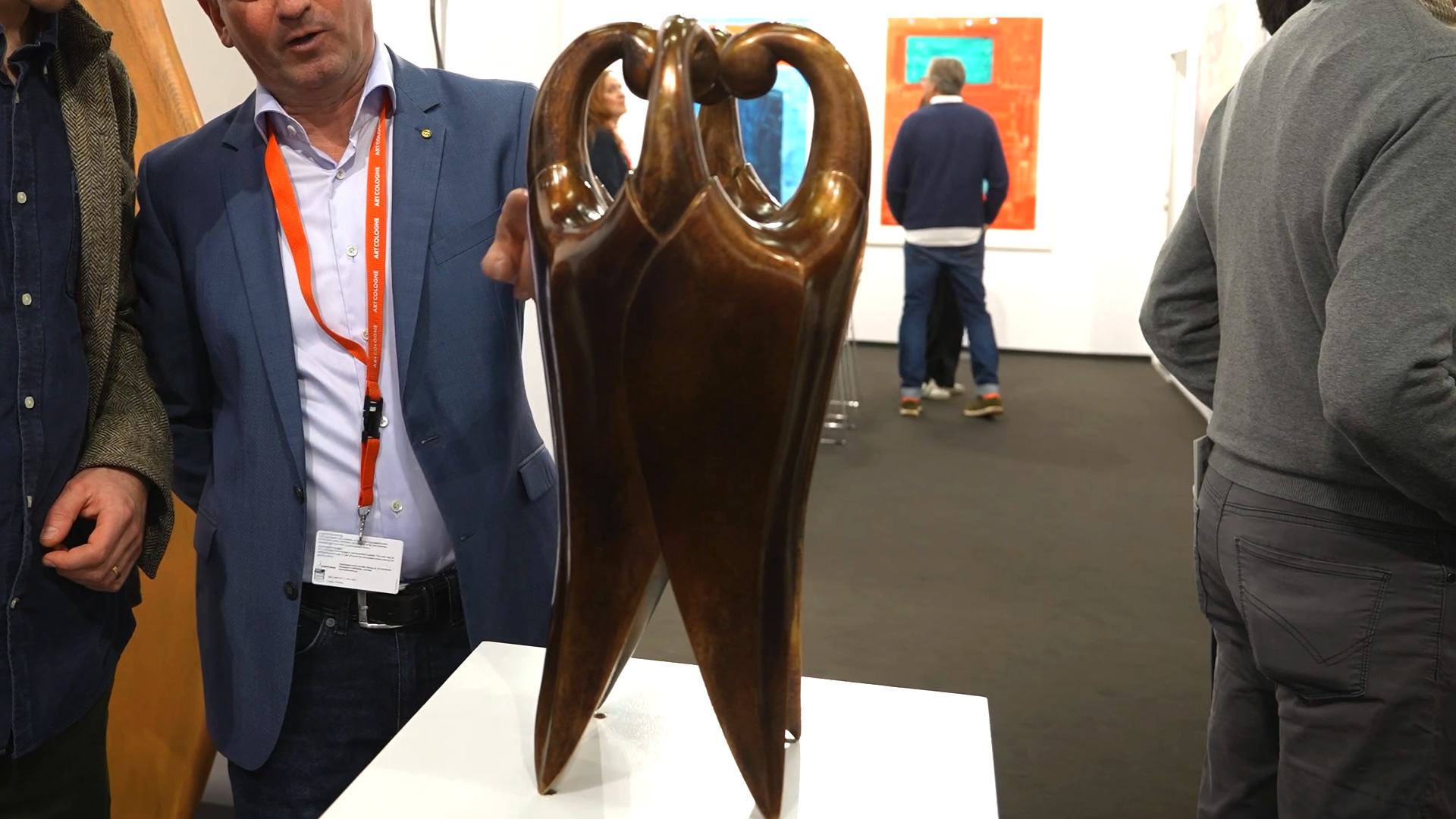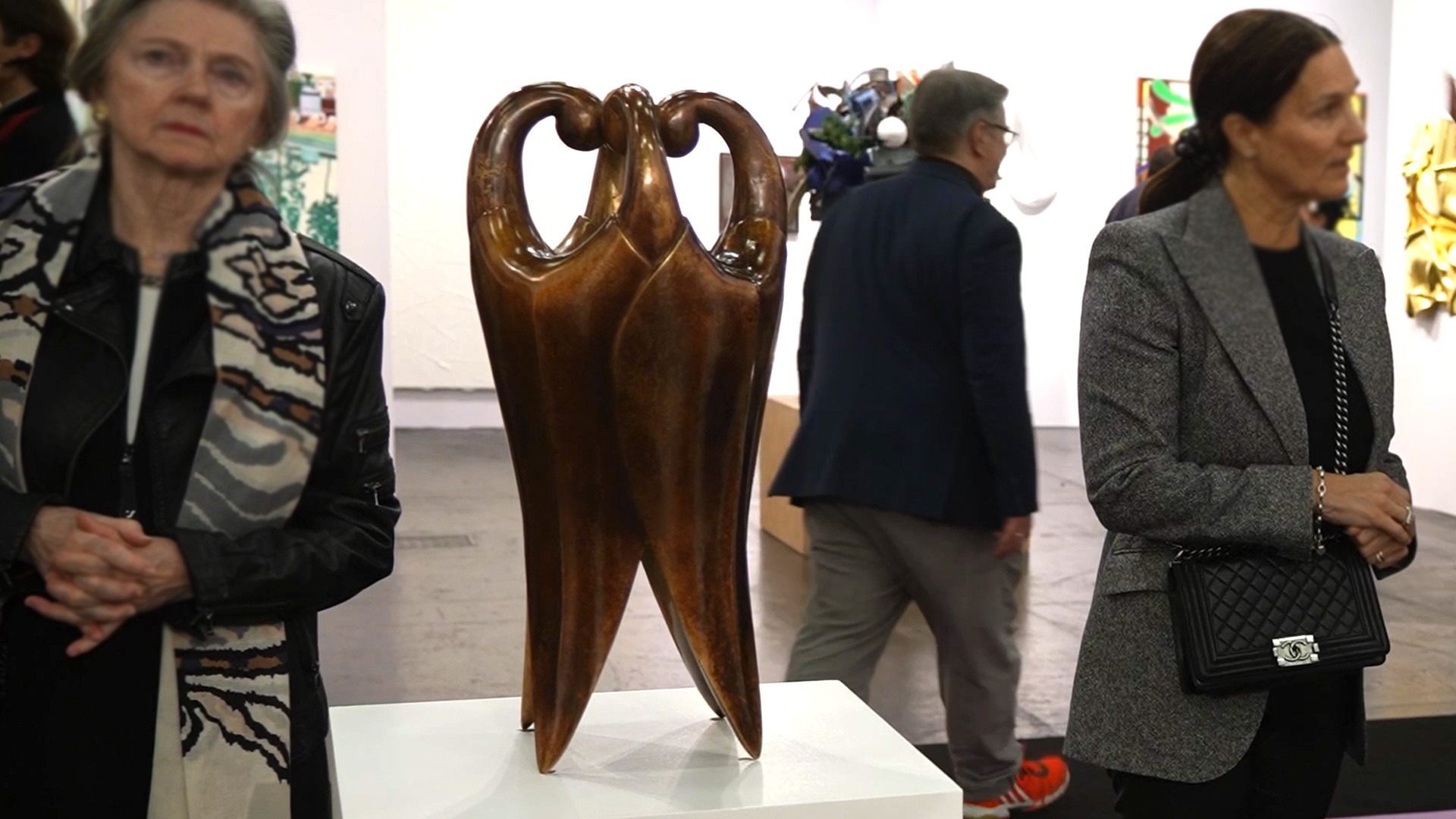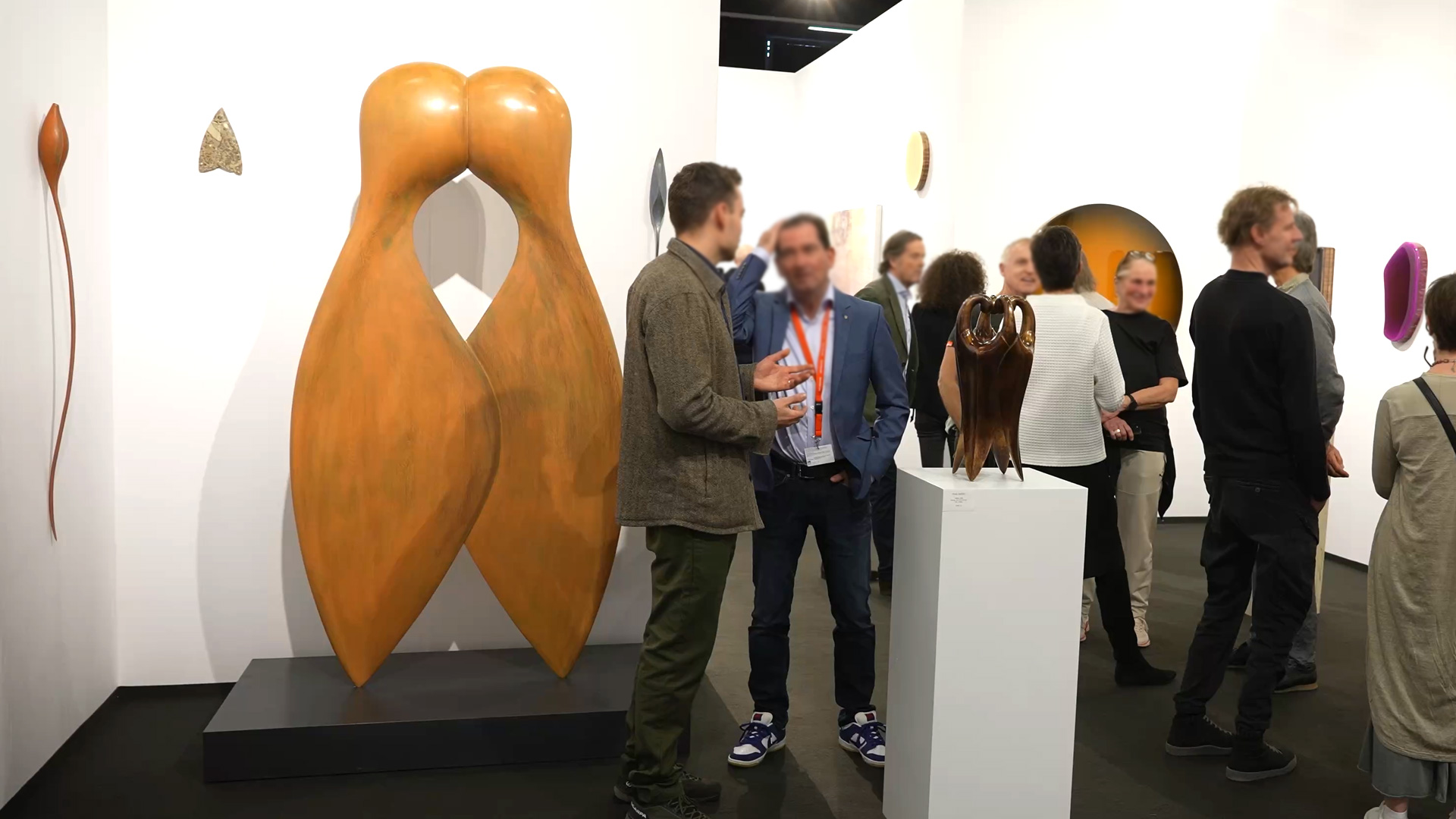The presentation at Löhrl gallery introduces a new bronze edition by Paul Diestel, in which the inflorescence of the columbine is condensed into a sculptural form. The sculpture is reminiscent of a small ensemble of figures standing together in a close circle and meeting at eye level.

The columbine resembles a quartet conveying an attitude of standing together. Diestel uses botanical stages as a starting point to formulate fundamental questions of human coexistence: closeness, equality, exchange. In this way, the plant becomes a model for social relationships.

The artist describes the manufacturing process as an essential part of the work. The sculpture was first created as a model made of oak wood, which was then cast in bronze in a foundry over several months. The blank was then further processed and individually patinated. The bronze—around fifty centimeters high, hollow cast, and weighing about twenty to thirty kilograms—combines material economy and traditional casting technology. A proportion of recycled old castings is part of the production process.

The first casting of the edition is intended for a garden. Water can collect inside, allowing the bronze to become part of a natural environment. The idea of a bird using the form as a drinking trough adds a quiet poetic dimension to the sculpture.

Löhrl gallery presents an edition of five copies that have identical forms but different surfaces. Each bronze thus remains independent within a closed framework.